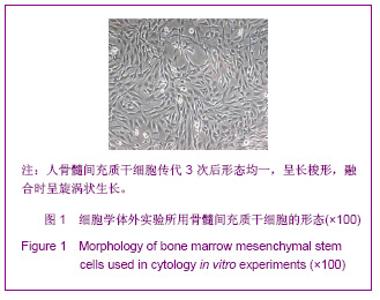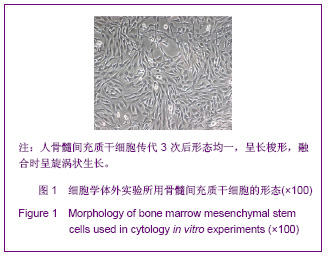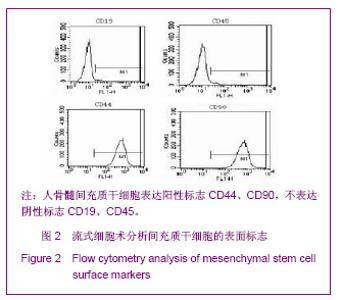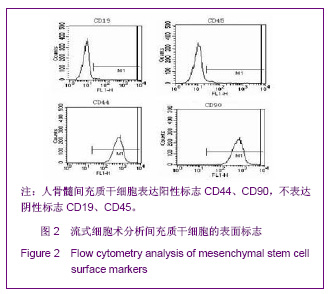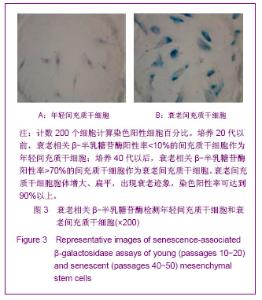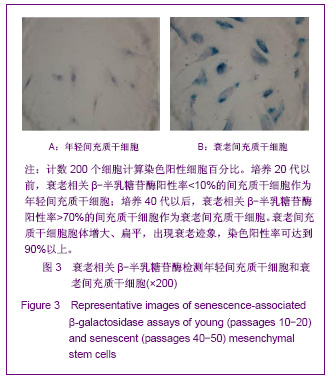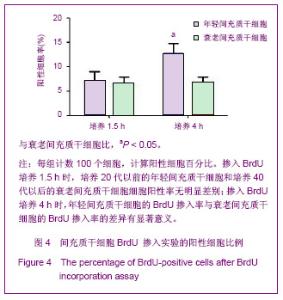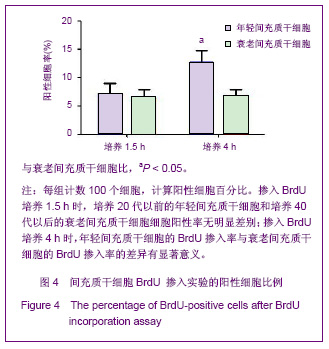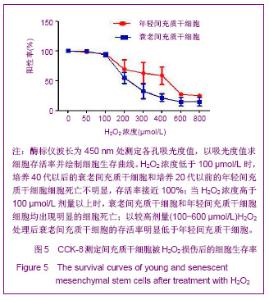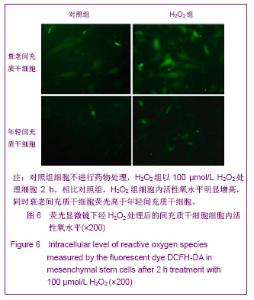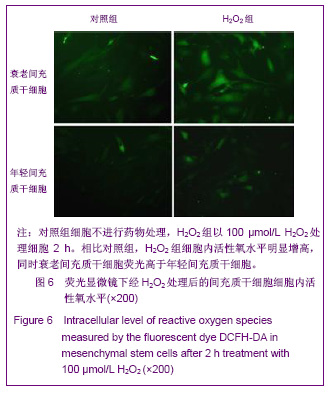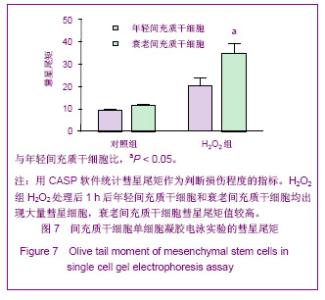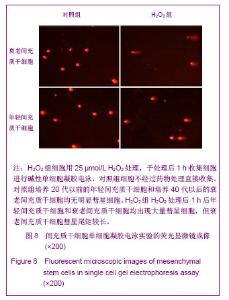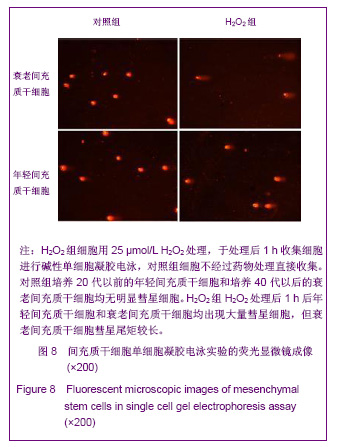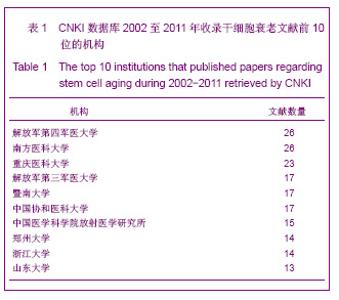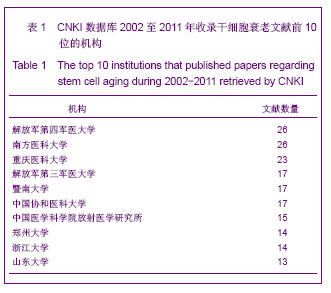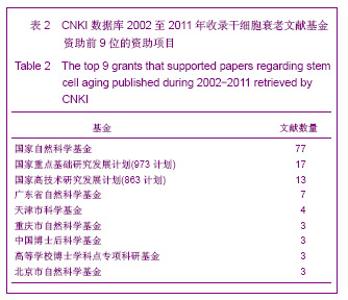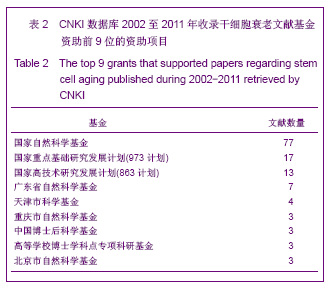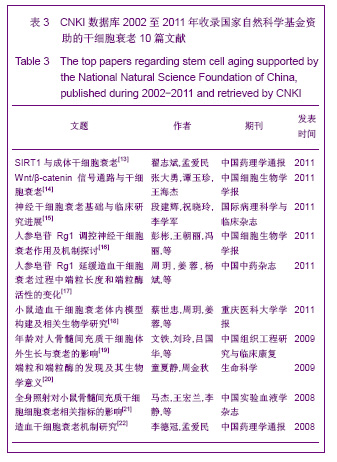Chinese Journal of Tissue Engineering Research ›› 2013, Vol. 17 ›› Issue (10): 1801-1808.doi: 10.3969/j.issn.2095-4344.2013.10.015
Previous Articles Next Articles
Aging reduces oxidative damage repair ability of mesenchymal stem cells
Zhang Yue, Yu Jin, Zhang Yi, Shi Jia-zhong, Huang Ya-qin, Yang Jin
- Department of Cell Biology, College of Basic Medical Sciences, Third Military Medical University of Chinese PLA, Chongqing 40038, China
-
Received:2012-10-09Revised:2013-01-18Online:2013-03-05Published:2013-03-05 -
Contact:Yang Jin, Doctoral supervisor, Professor, Department of Cell Biology, College of Basic Medical Sciences, Third Military Medical University of Chinese PLA, Chongqing 400038, China zhiwenchen@hotmail.com -
About author:Zhang Yue★,Studying for master’s degree, Department of Cell Biology, College of Basic Medical Sciences, Third Military Medical University of Chinese PLA, Chongqinq 400038, China candice134@163.com
CLC Number:
Cite this article
Zhang Yue, Yu Jin, Zhang Yi, Shi Jia-zhong, Huang Ya-qin, Yang Jin. Aging reduces oxidative damage repair ability of mesenchymal stem cells[J]. Chinese Journal of Tissue Engineering Research, 2013, 17(10): 1801-1808.
share this article
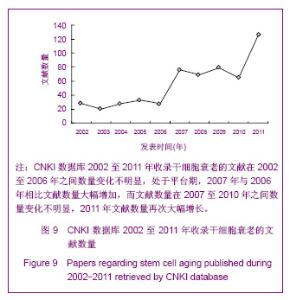
文献分析 3.1 CNKI数据库2002至2011年收录干细胞衰老的文献数量 见图9。 CNKI数据库2002至2011年一共收录干细胞衰老的文献552篇。由图9可看出,在2002至2006年之间数量变化不明显,处于平台期,2007年与2006年相比文献数量大幅增加,而文献数量在2007至2010年之间数量变化不明显,2011年文献数量再次大幅增长。 3.2 CNKI数据库2002至2011年收录干细胞衰老文献的机构 见表1。 由表1可看出,解放军第四军医大学和南方医科大学分别发表了26篇文献是关于干细胞衰老方面的,居全国之首。重庆医科大学排在第3位,发表了23篇文献。其余发表相关文献较多的机构有解放军第三军医大学、暨南大学、中国协和医科大学、中国医学科学院放射医学研究所、郑州大学、浙江大学、山东大学。"
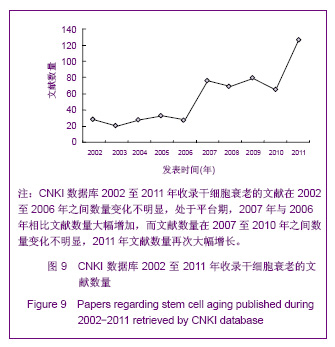
| [1] Pittenger MF, Mackay AM, Beck SC, et al. Multilineage potential of adult human mesenchymal stem cells. Science. 1999;284(5411):143-147.[2] Musina R, Bekchanova E, Sukhikh G. Comparison of mesenchymal stem cells obtained from different human tissues. Bull Exp Biol Med. 2005;139(4):504-509.[3] Paniushin O, Domaratskaia E, Starostin V. Mesenchymal stem cells: sources, phenotype, and differentiation potential. Izv Akad Nauk Ser Biol. 2006;(1):6-25.[4] Granero‐Moltó F, Weis JA, Miga MI, et al. Regenerative effects of transplanted mesenchymal stem cells in fracture healing. Stem Cells. 2009;27(8):1887-1898.[5] Shen W, Chen X, Chen J, et al. The effect of incorporation of exogenous stromal cell-derived factor-1 alpha within a knitted silk-collagen sponge scaffold on tendon regeneration. Biomaterials. 2010;31(28):7239-7249.[6] Imanishi Y, Saito A, Komoda H, et al. Allogenic mesenchymal stem cell transplantation has a therapeutic effect in acute myocardial infarction in rats. J Mol Cell Cardiol. 2008;44(4): 662-671.[7] Chang SCN, Chuang H, Chen YR, et al. Cranial repair using BMP-2 gene engineered bone marrow stromal cells. J Surg Res. 2004;119(1):85-91.[8] Bruder SP, Jaiswal N, Haynesworth SE. Growth kinetics, self-renewal, and the osteogenic potential of purified human mesenchymal stem cells during extensive subcultivation and following cryopreservation. J Cell Biochem. 1997;64(2):278-294.[9] Ksiazek K. A comprehensive review on mesenchymal stem cell growth and senescence. Rejuvenation Res. 2009;12(2): 105-116. [10] Stolzing A, Jones E, McGonagle D, et al. Age-related changes in human bone marrow-derived mesenchymal stem cells: consequences for cell therapie. Mech Ageing Dev. 2008; 129(3):163-173.[11] Buttiglieri S, Ruella M, Risso A, et al. The aging effect of chemotherapy on cultured human mesenchymal stem cells. Exp Hematol. 2011;39(12):1171-1181.[12] Olive PL, Banáth JP. The comet assay: a method to measure DNA damage in individual cells. Nat Protoc. 2006;1(1):23-29.[13] Zhai ZB, Meng AM. Zhongguo Yaolixue Tongbao. 2011;27(1): 140-142. 翟志斌,孟爱民.SIRT1与成体干细胞衰老[J].中国药理学通报, 2011,27(1):140-142.[14] Zhang DY, Tan YZ, Wang HJ. Zhongguo Xibao Shengwuxue Xuebao. 2011;33(1):72-77. 张大勇,谭玉珍,王海杰.Wnt/β-catenin信号通路与干细胞衰老[J].中国细胞生物学学报,2011,33(1):72-77.[15] Duan JH, Zhu XL, Li XJ. Guoji Binli Kexue yu Linchuang Zazhi. 2011;31(4):291-295. 段建辉,祝晓玲,李学军.神经干细胞衰老基础与临床研究进展[J].国际病理科学与临床杂志,2011,31(4):291-295.[16] Peng B, Wang CL, Feng L, et al. Zhongguo Xibao Shengwuxue Xuebao. 2011;33(10):1116-1122. 彭彬,王朝丽,冯丽,等.人参皂苷Rg1调控神经干细胞衰老作用及机制探讨[J].中国细胞生物学学报,2011,33(10):1116-1122.[17] Zhou Y, Jiang R, Yang B, et al. Zhongguo Zhongyao Zazhi. 2011;36(22):3172-3175. 周玥,姜蓉,杨斌,等.人参皂苷Rg1延缓造血干细胞衰老过程中端粒长度和端粒酶活性的变化[J].中国中药杂志,2011,36(22): 3172-3175.[18] Cai SZ, Zhou Y, Jiang R, et al. Chongqing Yike Daxue Xuebao. 2011;36(4):385-388. 蔡世忠,周玥,姜蓉,等.小鼠造血干细胞衰老体内模型构建及相关生物学研究[J].重庆医科大学学报,2011,36(4):385-388.[19] Wen T, Liu L, Lv GH, et al. Zhongguo Zuzhi Gongcheng Yanjiu yu Linchuang Kangfu. 2009;13(32):6243-6248. 文铁,刘玲,吕国华,等.年龄对人骨髓间充质干细胞体外生长与衰老的影响[J].中国组织工程研究与临床康复,2009,13(32): 6243-6248.[20] Tong XJ, Zhou JQ. Shengmin Kexue. 2009;21(6):760-769. 童夏静,周金秋.端粒和端粒酶的发现及其生物学意义[J].生命科学,2009,21(6):760-769.[21] Ma J, Wang HL, Li J, et al. Zhongguo Shiyan Xueyexue Zazhi. 2008;16(6):1387-1391. 马杰,王宏兰,李静,等.全身照射对小鼠骨髓间充质干细胞细胞衰老相关指标的影响[J].中国实验血液学杂志,2008,16(6):1387- 1391.[22] Li GD, Meng AM. Zhongguo Yaolixue Tongbao. 2008;24(6): 701-704. 李德冠,孟爱民.造血干细胞衰老机制研究[J].中国药理学通报, 2008,24(6):701-704.[23] Minguell JJ, Erices A, Conget P. Mesenchymal stem cells. Exp Biol Med (Maywood). 2001;226(6):507-520.[24] Orlic D, Kajstura J, Chimenti S, et al. Bone marrow cells regenerate infarcted myocardium. Nature. 2001;410(6829): 701-705.[25] Woodbury D, Schwarz EJ, Prockop DJ, et al. Adult rat and human bone marrow stromal cells differentiate into neurons. J Neurosci Res. 2000;61(4):364-370.[26] Makino S, Fukuda K, Miyoshi S, et al. Cardiomyocytes can be generated from marrow stromal cells in vitro. J Clin Invest. 1999;103:697-705.[27] Wagner W, Wein F, Seckinger A, et al. Comparative characteristics of mesenchymal stem cells from human bone marrow, adipose tissue, and umbilical cord blood. Exp Hematol. 2005;33(11):1402-1416.[28] Ball LM, Bernardo ME, Roelofs H, et al. Cotransplantation of ex vivo–expanded mesenchymal stem cells accelerates lymphocyte recovery and may reduce the risk of graft failure in haploidentical hematopoietic stem-cell transplantation. Blood. 2007;110(7):2764-2767.[29] Le Blanc K, Frassoni F, Ball L, et al. Mesenchymal stem cells for treatment of steroid-resistant, severe, acute graft-versus- host disease: a phase II study. Lancet. 2008;371(9624): 1579-1586.[30] Galderisi U, Helmbold H, Squillaro T, et al. In vitro senescence of rat mesenchymal stem cells is accompanied by downregulation of stemness-related and DNA damage repair genes. Stem Cells Dev. 2009;18(7):1033-1042.[31] Meza‐Zepeda LA, Noer A, Dahl JA, et al. High‐resolution analysis of genetic stability of human adipose tissue stem cells cultured to senescence. J Cell Mol Med. 2008;12(2): 553-563.[32] Zhou S, Greenberger JS, Epperly MW, et al. Age-related intrinsic changes in human bone‐marrow-derived mesenchymal stem cells and their differentiation to osteoblasts. Aging Cell. 2008;7(3):335-343.[33] Røsland GV, Svendsen A, Torsvik A, et al. Long-term cultures of bone marrow-derived human mesenchymal stem cells frequently undergo spontaneous malignant transformation. Cancer Res. 2009;69(13):5331-5339.[34] Campisi J, Di Fagagna FDA. Cellular senescence: when bad things happen to good cells. Nat Rev Mol Cell Biol. 2007;8(9): 729-740.[35] Kim J, Kang JW, Park JH, et al. Biological characterization of long-term cultured human mesenchymal stem cells. Arch Pharm Res. 2009;32(1):117-126.[36] Heo JY, Jing K, Song KS, et al. Downregulation of APE1/Ref-1 Is Involved in the Senescence of Mesenchymal Stem Cells. Stem Cells. 2009;27(6):1455-1462.[37] Shibata KR, Aoyama T, Shima Y, et al. Expression of the p16INK4A gene is associated closely with senescence of human mesenchymal stem cells and is potentially silenced by DNA methylation during in vitro expansion. Stem Cells. 2007; 25(9):2371-2382.[38] Ryu E, Hong S, Kang J, et al. Identification of senescence-associated genes in human bone marrow mesenchymal stem cells. Biochem Biophys Res Commun. 2008;371(3):431-436.[39] Wagner W, Horn P, Castoldi M, et al. Replicative senescence of mesenchymal stem cells: a continuous and organized process. PLoS One. 2008;3(5):e2213.[40] Valle-Prieto A, Conget PA. Human mesenchymal stem cells efficiently manage oxidative stress. Stem Cells Dev. 2010; 19(12):1885-1893. |
| [1] | Pu Rui, Chen Ziyang, Yuan Lingyan. Characteristics and effects of exosomes from different cell sources in cardioprotection [J]. Chinese Journal of Tissue Engineering Research, 2021, 25(在线): 1-. |
| [2] | Zhang Xiumei, Zhai Yunkai, Zhao Jie, Zhao Meng. Research hotspots of organoid models in recent 10 years: a search in domestic and foreign databases [J]. Chinese Journal of Tissue Engineering Research, 2021, 25(8): 1249-1255. |
| [3] | Wang Zhengdong, Huang Na, Chen Jingxian, Zheng Zuobing, Hu Xinyu, Li Mei, Su Xiao, Su Xuesen, Yan Nan. Inhibitory effects of sodium butyrate on microglial activation and expression of inflammatory factors induced by fluorosis [J]. Chinese Journal of Tissue Engineering Research, 2021, 25(7): 1075-1080. |
| [4] | Wang Xianyao, Guan Yalin, Liu Zhongshan. Strategies for improving the therapeutic efficacy of mesenchymal stem cells in the treatment of nonhealing wounds [J]. Chinese Journal of Tissue Engineering Research, 2021, 25(7): 1081-1087. |
| [5] | Liao Chengcheng, An Jiaxing, Tan Zhangxue, Wang Qian, Liu Jianguo. Therapeutic target and application prospects of oral squamous cell carcinoma stem cells [J]. Chinese Journal of Tissue Engineering Research, 2021, 25(7): 1096-1103. |
| [6] | Xie Wenjia, Xia Tianjiao, Zhou Qingyun, Liu Yujia, Gu Xiaoping. Role of microglia-mediated neuronal injury in neurodegenerative diseases [J]. Chinese Journal of Tissue Engineering Research, 2021, 25(7): 1109-1115. |
| [7] | Li Shanshan, Guo Xiaoxiao, You Ran, Yang Xiufen, Zhao Lu, Chen Xi, Wang Yanling. Photoreceptor cell replacement therapy for retinal degeneration diseases [J]. Chinese Journal of Tissue Engineering Research, 2021, 25(7): 1116-1121. |
| [8] | Jiao Hui, Zhang Yining, Song Yuqing, Lin Yu, Wang Xiuli. Advances in research and application of breast cancer organoids [J]. Chinese Journal of Tissue Engineering Research, 2021, 25(7): 1122-1128. |
| [9] | Wang Shiqi, Zhang Jinsheng. Effects of Chinese medicine on proliferation, differentiation and aging of bone marrow mesenchymal stem cells regulating ischemia-hypoxia microenvironment [J]. Chinese Journal of Tissue Engineering Research, 2021, 25(7): 1129-1134. |
| [10] | Zeng Yanhua, Hao Yanlei. In vitro culture and purification of Schwann cells: a systematic review [J]. Chinese Journal of Tissue Engineering Research, 2021, 25(7): 1135-1141. |
| [11] | Kong Desheng, He Jingjing, Feng Baofeng, Guo Ruiyun, Asiamah Ernest Amponsah, Lü Fei, Zhang Shuhan, Zhang Xiaolin, Ma Jun, Cui Huixian. Efficacy of mesenchymal stem cells in the spinal cord injury of large animal models: a meta-analysis [J]. Chinese Journal of Tissue Engineering Research, 2021, 25(7): 1142-1148. |
| [12] | Hou Jingying, Yu Menglei, Guo Tianzhu, Long Huibao, Wu Hao. Hypoxia preconditioning promotes bone marrow mesenchymal stem cells survival and vascularization through the activation of HIF-1α/MALAT1/VEGFA pathway [J]. Chinese Journal of Tissue Engineering Research, 2021, 25(7): 985-990. |
| [13] | Shi Yangyang, Qin Yingfei, Wu Fuling, He Xiao, Zhang Xuejing. Pretreatment of placental mesenchymal stem cells to prevent bronchiolitis in mice [J]. Chinese Journal of Tissue Engineering Research, 2021, 25(7): 991-995. |
| [14] | Liang Xueqi, Guo Lijiao, Chen Hejie, Wu Jie, Sun Yaqi, Xing Zhikun, Zou Hailiang, Chen Xueling, Wu Xiangwei. Alveolar echinococcosis protoscolices inhibits the differentiation of bone marrow mesenchymal stem cells into fibroblasts [J]. Chinese Journal of Tissue Engineering Research, 2021, 25(7): 996-1001. |
| [15] | Fan Quanbao, Luo Huina, Wang Bingyun, Chen Shengfeng, Cui Lianxu, Jiang Wenkang, Zhao Mingming, Wang Jingjing, Luo Dongzhang, Chen Zhisheng, Bai Yinshan, Liu Canying, Zhang Hui. Biological characteristics of canine adipose-derived mesenchymal stem cells cultured in hypoxia [J]. Chinese Journal of Tissue Engineering Research, 2021, 25(7): 1002-1007. |
| Viewed | ||||||
|
Full text |
|
|||||
|
Abstract |
|
|||||
